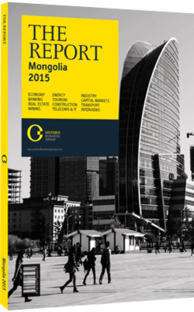Gérard Mestrallet, CEO, GDF SUEZ: Interview

Interview: Gérard Mestrallet
How will the major power projects currently under way impact Mongolia’s energy infrastructure?
GERARD MESTRALLET: Along with domestic and international investors, the Mongolian authorities have identified several projects that would help the country to meet its growing energy needs. Multinational corporations are uniquely placed to support these projects with our advanced engineering capabilities and expertise in the development of independent power production infrastructure. The total capacity of the projects under discussion will exceed Mongolia’s current total installed capacity and provide the energy required for urbanisation, and industrial and economic growth.
One such project is the Ulaanbaatar Thermal Power Plant No. 5, also referred to as CHP-5, which is being developed by a consortium that includes Newcom, Posco Energy, Sojitz Corporation and GDF SUEZ. In development since 2011, the plant will significantly boost the centralised grid once completed, providing reliable and environmentally friendly energy to support the capital city’s dynamic growth rates.
GDF SUEZ is also among a number of companies that have pre-qualified to submit a proposal for the construction of the Tavan Tolgoi Power Plant (TTPP) project, which will produce roughly 450 MW in the South Gobi region. The plant will support the development of the mining industry, as well as local communities, via reliable power generation, independent of imports.
What new technologies can be employed to increase the efficiency of Mongolia’s power infrastructure?
MESTRALLET: The modernisation of power infrastructure needs to respond to the government’s priorities and to local specificities. A single solution cannot answer all these challenges, and a diversified approach to employing energy solutions must be taken. Ulaanbaatar needs a significant amount of power and heat, and faces a critical level of pollution during the winter season. A modern cogeneration plant such as CHP-5 is therefore required, with the aim of delivering power and heat from a source close to customers. CHP-5 will help reduce carbon dioxide emissions by almost 40% and water consumption by a factor of three to five in comparison to existing facilities. Moreover, the emission of dust will come in line with World Bank standards.
For the mining industry, which is mostly isolated from the centralised grid, the development of large power infrastructure is required at strategic locations. The TTPP project illustrates the challenges: the use of domestic coal and the scarcity of resources are key factors requiring the use of advanced designs, including fuel-flexible boilers and free-water condensers.
In what ways can foreign multinationals help Mongolia to meet its growing electricity needs?
MESTRALLET: The implementation of new technologies requires know-how that foreign multinationals with demonstrated track records in operating power plants can provide. Infrastructure investments are capital intensive and foreign multinationals can bring financing solutions at competitive costs due to their experience in similar project finance schemes. The use of public-private partnerships enables the Mongolian government to develop its power infrastructure without impacting its level of debt.
How can international investors be reassured, particularly those in the power sector?
MESTRALLET: Mongolia has solid regulatory foundations, providing a sound basis for foreign direct investment. Ensuring that major infrastructure projects enjoy good public governance and reasonable approval procedures will help boost Mongolia’s reputation as a recipient of foreign investment. In the longer term the appropriate balance between private investment and public intervention must be maintained. Similarly, the energy system must ensure an equilibrium between the need to attract investment and the sustainability of the power system, such as a balanced tariff structure taking into account the various usages for power.
You have reached the limit of premium articles you can view for free.
Choose from the options below to purchase print or digital editions of our Reports. You can also purchase a website subscription giving you unlimited access to all of our Reports online for 12 months.
If you have already purchased this Report or have a website subscription, please login to continue.

